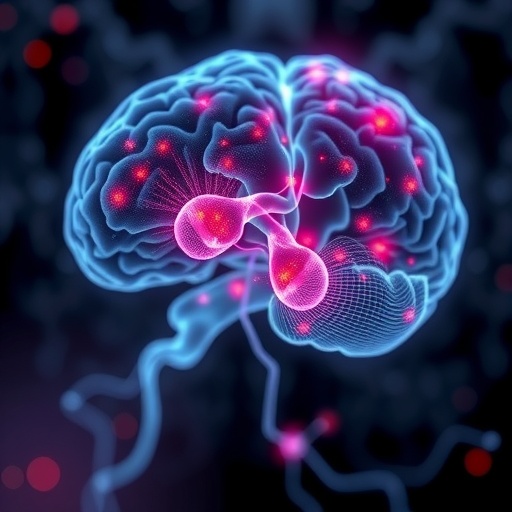A Groundbreaking Insight into Neuronal Aging: Splicing Protein Mislocalization and the Cascade of Cellular Stress
Recent advances in neuroscience have unveiled a pivotal mechanism contributing to the decline of neuronal function with age. In a landmark study published in Nature Neuroscience in 2025 by Rhine, Li, Kopalle, and colleagues, researchers revealed that neuronal aging induces the mislocalization of splicing proteins within nerve cells, triggering a complex cascade of uncontrolled cellular stress. This discovery unveils a new dimension of molecular dysfunction underlying neurodegeneration, reshaping our understanding of the aging brain and opening promising avenues for therapeutic intervention.
Until now, the biological pathways responsible for age-related neuronal decline—one of the key factors in neurodegenerative diseases such as Alzheimer’s and Parkinson’s—remained elusive in many respects. The collaborative research team employed cutting-edge molecular and imaging techniques to track the spatial distribution of splicing factors, specialized proteins that regulate the maturation of RNA transcripts. These proteins are essential for alternative splicing, a process that enables a single gene to code for multiple functional proteins. Proper localization of splicing proteins within the nucleus ensures precise control over gene expression, which is vital for neuronal health and adaptability.
The study uncovered that in aged neurons, several core splicing proteins aberrantly relocate from their native nuclear compartments into the cytoplasm. This mislocalization disrupts the regular RNA processing machinery, leading to widespread defects in RNA splicing fidelity. As a consequence, neurons experience perturbations in protein synthesis, which gradually undermines cellular homeostasis. More alarmingly, the researchers observed that this defect escalates cellular stress responses that are normally tightly regulated, resulting in a sustained state of biochemical dysregulation detrimental to neuronal survival.
Delving deeper, the team identified that mislocalized splicing proteins initiate maladaptive stress signaling pathways, notably involving the unfolded protein response (UPR) and oxidative stress cascades. Under normal conditions, these pathways help to maintain protein quality control and mitigate damage, but chronic activation due to splicing defects leads to inflammation and apoptosis. Importantly, the study demonstrated that this unchecked cellular stress not only compromises neuronal integrity but also potentially propagates pathology to adjacent cells, amplifying neurodegenerative processes on a tissue-wide scale.
To elucidate the temporal dynamics of splicing protein mislocalization, researchers utilized longitudinal in vivo imaging in aged murine models, complemented by super-resolution microscopy on postmortem human brain tissues. The findings convincingly indicated that the phenomenon begins subtly during midlife but progressively intensifies in advanced age. This temporal progression correlates with a decline in cognitive and motor function, suggesting a direct link between molecular derangement at the splicing level and organismal aging phenotypes.
Molecular analyses further revealed that aging neurons display alterations in the nuclear pore complex (NPC), the gateway regulating molecular trafficking between the nucleus and cytoplasm. Dysfunctional NPCs contribute to the aberrant export of splicing proteins, a mechanism that may be exploited therapeutically. By targeting NPC integrity or modulating nuclear-cytoplasmic transport, it may be possible to restore proper splicing protein localization and forestall the downstream cascade of cellular stress.
The research also explored the interplay between splicing protein mislocalization and epigenetic modifications, offering new insight into how age-related chromatin remodeling might exacerbate RNA processing defects. Changes in histone acetylation and DNA methylation patterns were found to influence the expression of genes encoding splicing machinery, potentially creating a feedback loop that accelerates neuronal decline. This multifactorial interaction underscores the complexity of aging-related molecular networks.
In a quest to translate these findings into therapeutic strategies, the investigators experimented with small molecules capable of stabilizing splicing proteins within the nucleus. Preliminary results suggest that pharmacologically maintaining the nuclear presence of these proteins reduces cellular stress markers and enhances neuronal viability in cultured cell models exposed to aging-mimicking insults. Although early-stage, these interventions hold promise for future drug development in combating neurodegeneration.
The implications of this study extend beyond basic neuroscience. Given that RNA splicing defects and cellular stress are implicated in a broad spectrum of diseases, understanding how aging neuron-specific dysregulation triggers pathology could illuminate overlapping pathways in other age-associated disorders. Moreover, the discovery propels the focus toward RNA biology as a critical frontier in aging research, previously overshadowed by protein aggregation and mitochondrial dysfunction paradigms.
Importantly, this research may redefine diagnostic approaches for neurodegenerative diseases by identifying biomarkers linked to splicing protein mislocalization and stress response activation. The integration of molecular profiling with advanced imaging may enable early detection of neuronal dysfunction long before clinical symptoms manifest, enabling timely therapeutic intervention.
To achieve such breakthroughs, the authors highlight the indispensable role of multi-disciplinary collaboration, merging molecular biology, bioinformatics, imaging technology, and translational pharmacology. This integrative approach sets a standard for future aging research, driving toward a comprehensive, mechanistic understanding of brain aging that transcends traditional reductionist views.
Ultimately, the study by Rhine and colleagues represents a tangible leap forward in neuroscience, not only by identifying a novel molecular culprit in neuronal aging but also by illuminating practical paths to intervene. As populations worldwide continue to age, combating cognitive decline and neurodegenerative diseases stands as an urgent priority. These insights afford hope that future therapies might one day preserve neuronal function and improve quality of life in the elderly.
The enchanting complexity of the aging brain continues to unravel its secrets, revealing a delicate balance maintained by nuclear compartmentalization of key proteins. Disruption of this balance initiates a domino effect of cellular distress, underscoring the intricate molecular choreography necessary for neuronal longevity. This pioneering work invigorates ongoing scientific efforts to decode and manipulate the fundamental biology of aging, offering a new beacon of promise in the fight against brain disease.
Subject of Research: Neuronal aging, RNA splicing protein mislocalization, and cellular stress mechanisms contributing to neurodegeneration.
Article Title: Neuronal aging causes mislocalization of splicing proteins and unchecked cellular stress.
Article References:
Rhine, K., Li, R., Kopalle, H.M. et al. Neuronal aging causes mislocalization of splicing proteins and unchecked cellular stress.
Nat Neurosci (2025). https://doi.org/10.1038/s41593-025-01952-z
Image Credits: AI Generated




